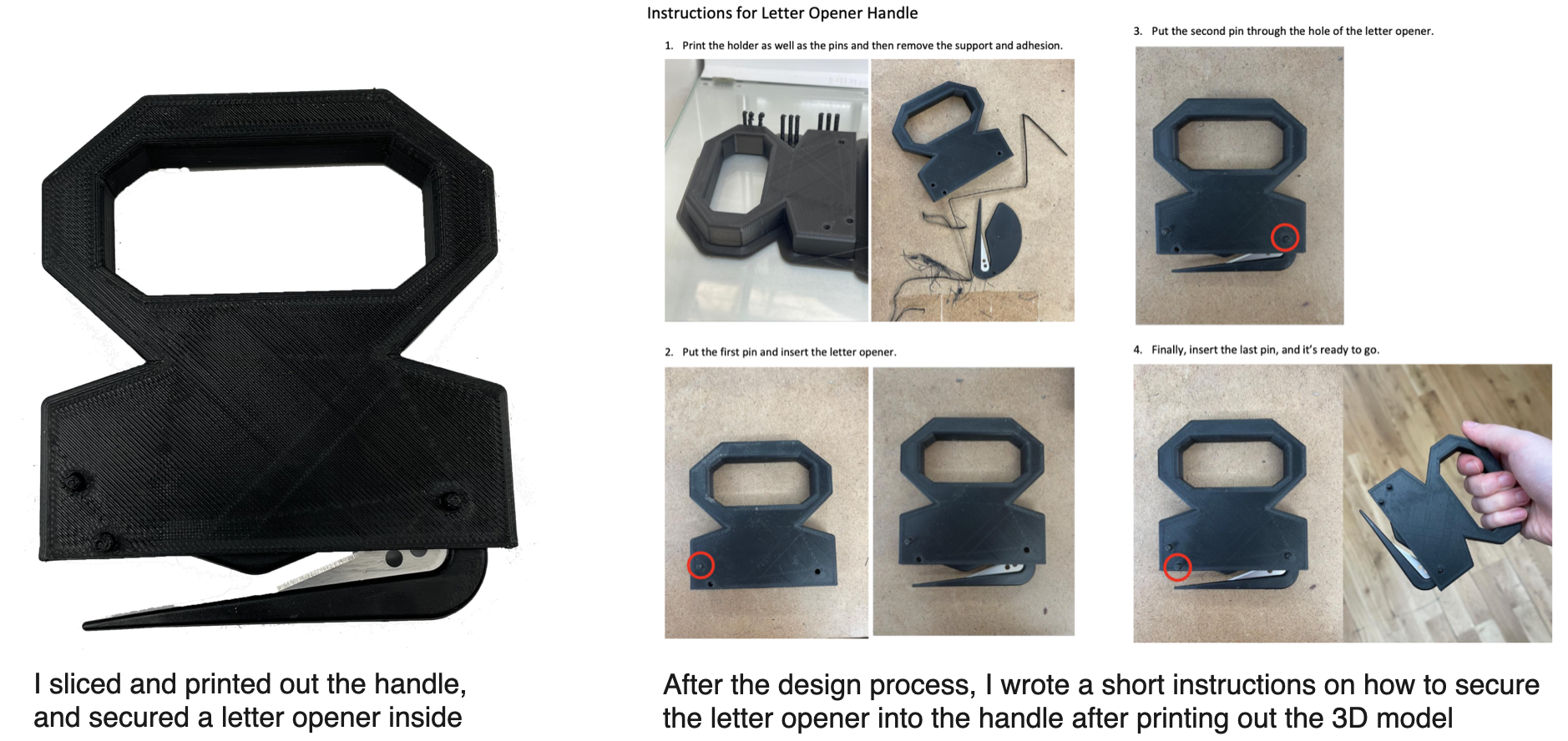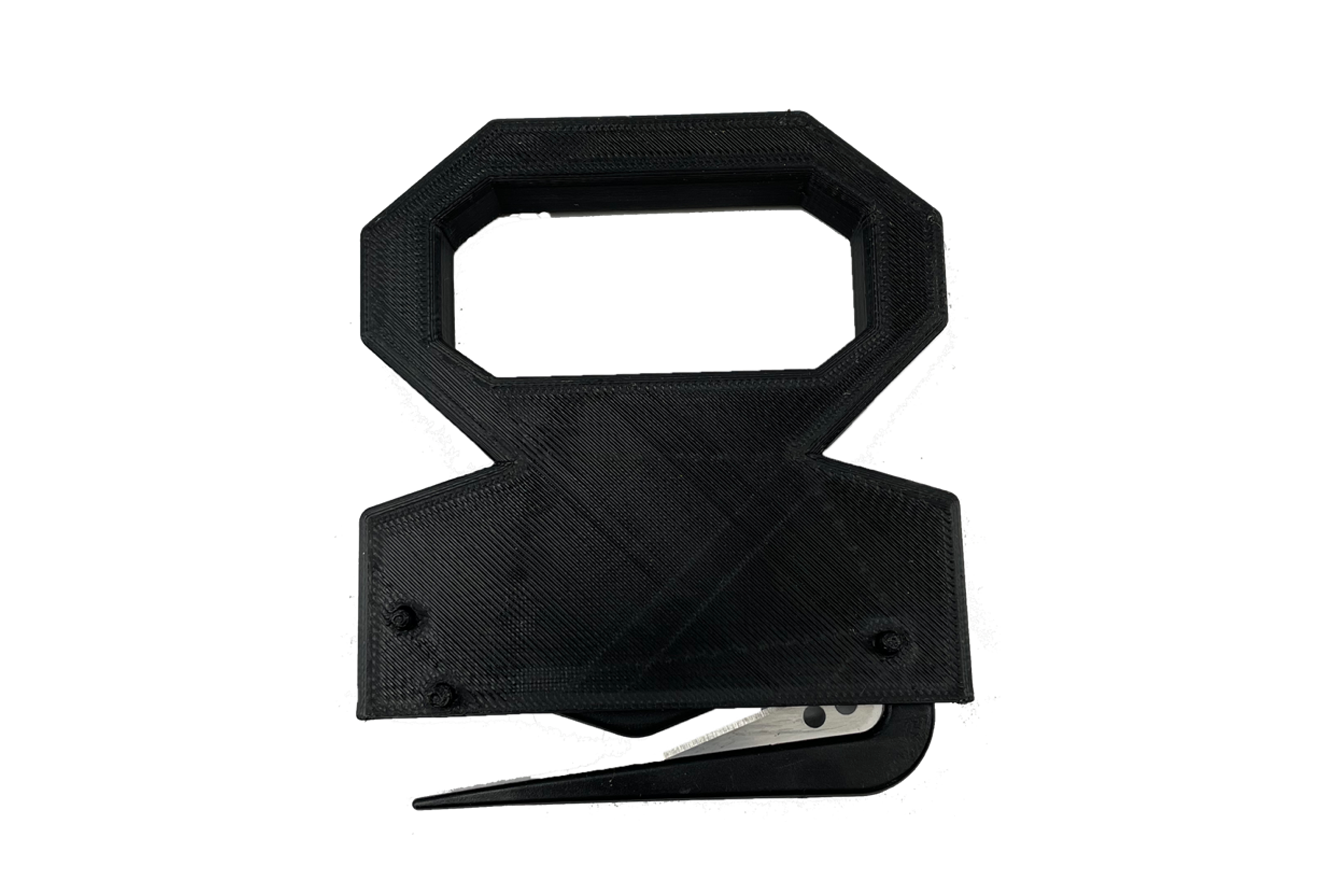
The final design of the tool
Handle for Letter Opener (2022)
Designing an Ergonomic Handle: Enhancing Daily Independence for Users with Limited DexterityRole: Project Leader, Designer/Product Developer, Researcher
Keywords: 3d Fabrication, User-Centered Design
Our Client
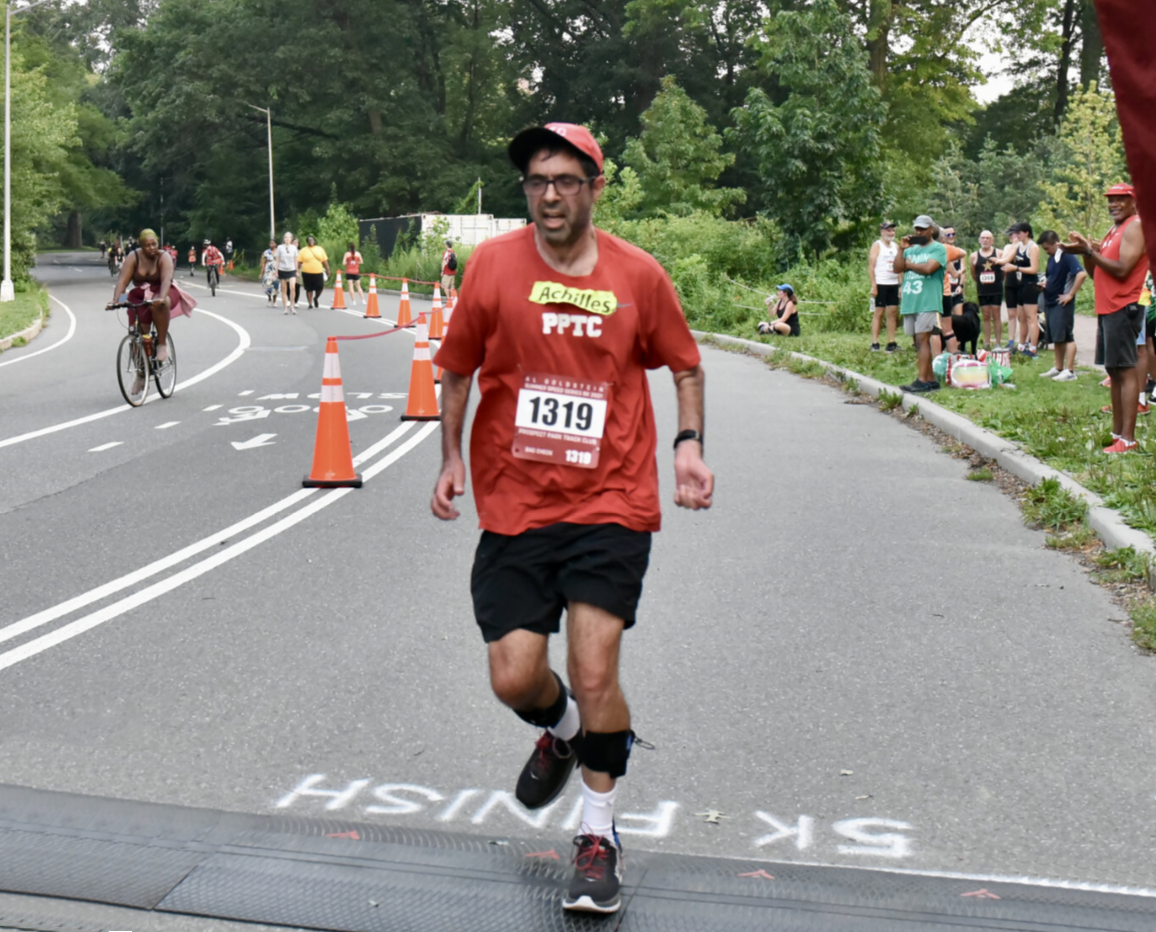 Credit: Prospect Park Track Club
Credit: Prospect Park Track Club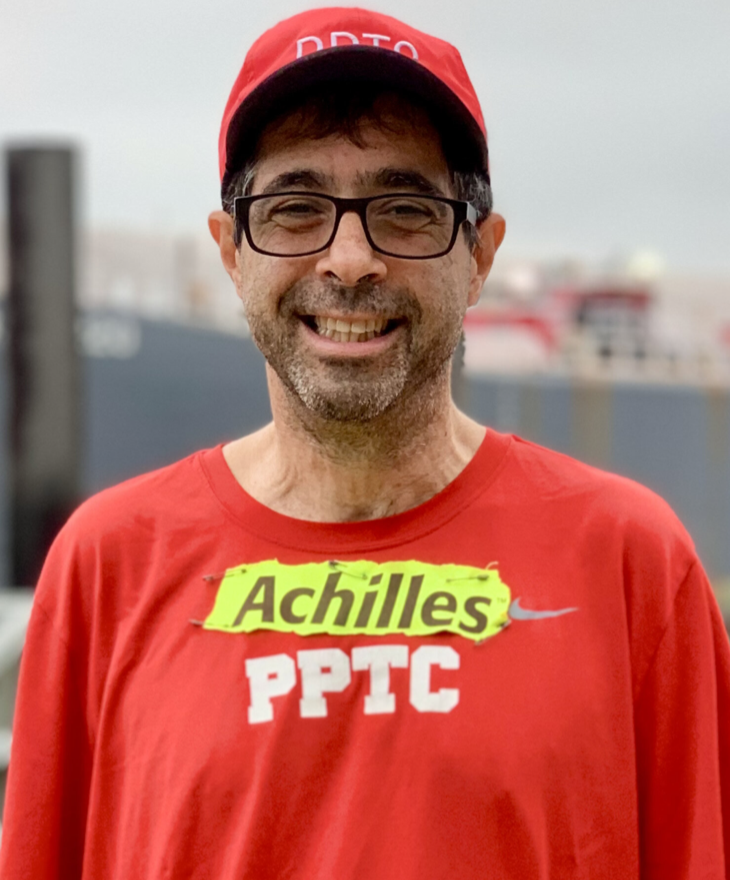
“I don’t want to ask people for help because I hate to be reminded of my disability.”— Michael Ring, a Brooklyn Marathoner
Design Challenge
Our goal was to create a user-centered tool that addresses Michael's specific physical limitations and emotional needs. This included helping him grip and open envelopes and packages independently, in a way that minimized reminders of his disability.
Our goal was to create a user-centered tool that addresses Michael's specific physical limitations and emotional needs. This included helping him grip and open envelopes and packages independently, in a way that minimized reminders of his disability.
User Research & Empathy Building
We conducted in-depth interviews with Michael, a marathoner with Motor Axonal Neuropathy (a form of Guillain-Barré Syndrome triggered by food poisoning), to gain insight into his specific challenges and needs. Michael expressed frustration with daily tasks that require finger strength and shared his strong desire for independence, stating, “I don’t want to ask people for help because I hate to be reminded of my disability.”
We conducted in-depth interviews with Michael, a marathoner with Motor Axonal Neuropathy (a form of Guillain-Barré Syndrome triggered by food poisoning), to gain insight into his specific challenges and needs. Michael expressed frustration with daily tasks that require finger strength and shared his strong desire for independence, stating, “I don’t want to ask people for help because I hate to be reminded of my disability.”
Michael’s Physical Challenges
Post-surgery, Michael has limited control in his left hand, with minimal strength in his fingers and a reliance on his index fingers and knuckles. He also faces stiffness in colder conditions, further limiting his grip and dexterity.
Post-surgery, Michael has limited control in his left hand, with minimal strength in his fingers and a reliance on his index fingers and knuckles. He also faces stiffness in colder conditions, further limiting his grip and dexterity.
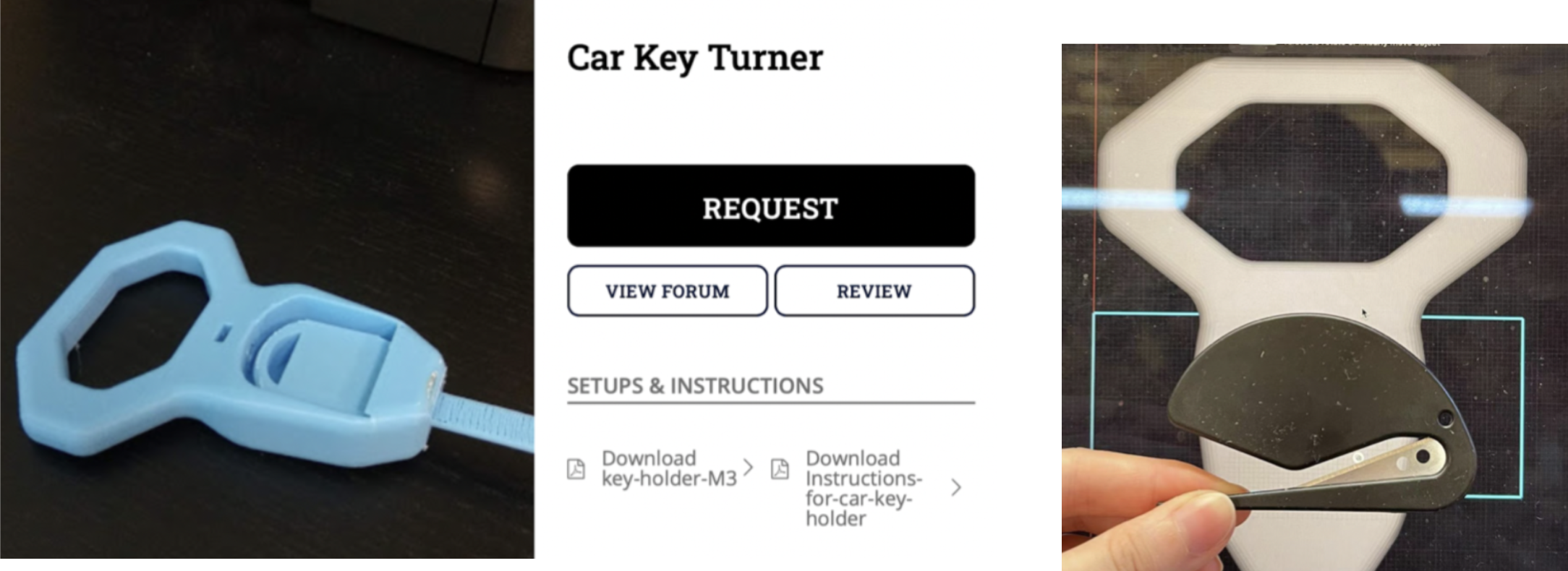
Ideation & Reference Gathering
Researching preexisting solutions is essential in assistive technology, as it identifies adaptable and effective designs. However, we found no existing tools that met Michael's unique needs. Guided by his input, we turned to Makers Making Change, an open-source platform for assistive tools. The car key turner design caught our attention with its simple, reliable grip, inspiring features for our handle prototype.
Design & Prototyping
We developed a handle prototype, focusing on ergonomics and ease of use. This prototype integrated a grip structure similar to the car key turner for reliable grasping, even in cold conditions where Michael’s strength and dexterity are further limited. While my teammates focused on documenting the process and collaborating with Michael, I took the lead on designing and crafting the handle.

User Testing & Iteration
User studies with Michael were a key phase, where we gathered his feedback on grip comfort and ease of use. His insights led to refinements that better supported his daily tasks, ensuring the handle was both functional and empowering. In our final user study, Michael expressed satisfaction with the handle, noting that it supported his self-sufficiency and minimized the daily reminders of his physical challenges.
